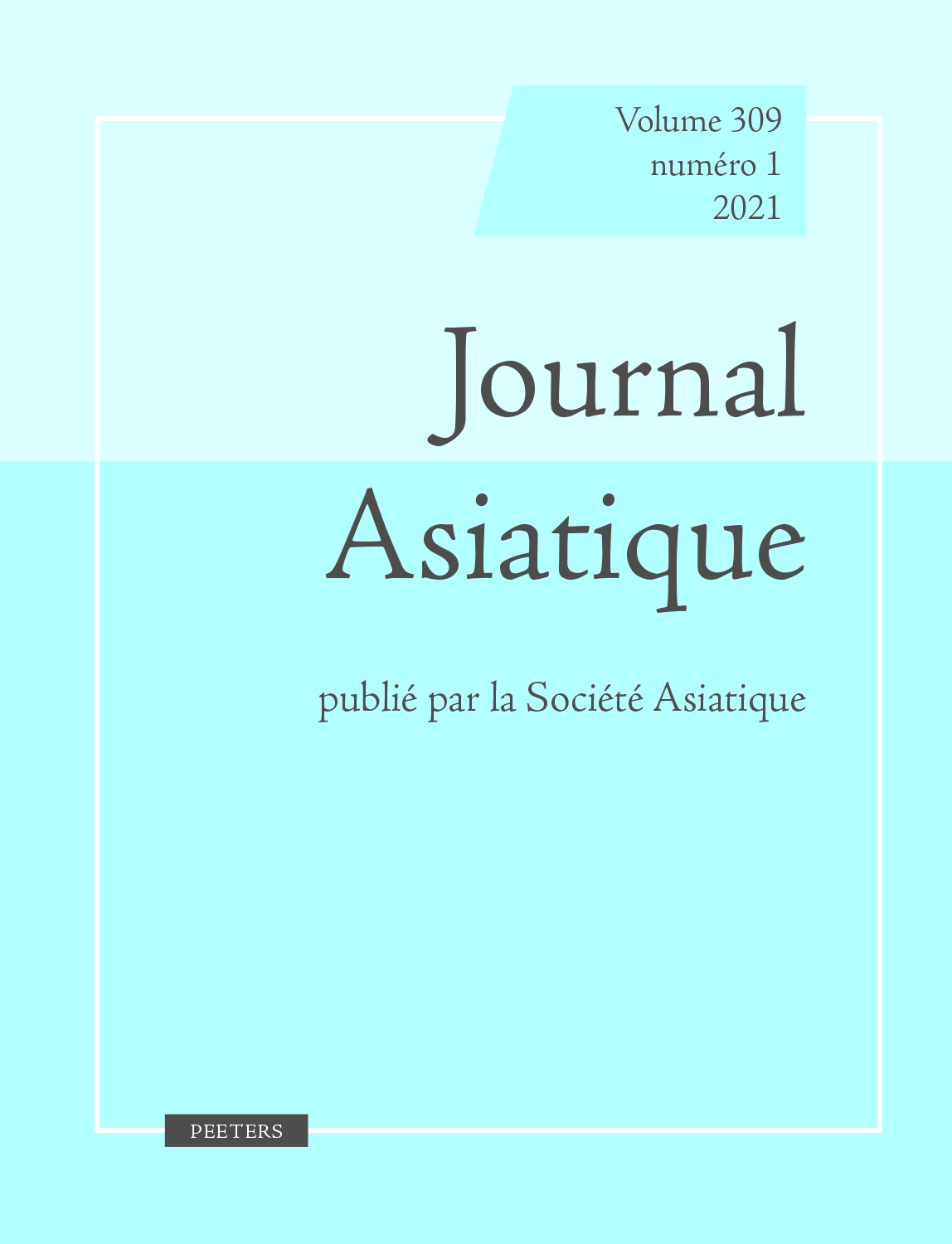 previous article in this issue previous article in this issue | next article in this issue  |

Preview first page |
Document Details : Title: Un asocial singulier: Aḥmad-e Zamji «le fou» Subtitle: Figure marquante de l'Abu Moslem Nâme Author(s): GAILLARD, Marina Journal: Journal Asiatique Volume: 300 Issue: 1 Date: 2012 Pages: 139-169 DOI: 10.2143/JA.300.1.2186339 Abstract : Célèbre récit romanesque relevant de la «prose épique chiite» en ce qu’il s’inscrit dans un ensemble d’oeuvres corrélées au martyre de l’imam Ḥoseyn, l’Abu Moslem Nâme d’Abu Ṭâher-e Ṭarṭusi (XIe-XIIe s. environ) présente, en la personne d’Aḥmad-e Zamji, une étrange figure centrale: doté des traits caractéristiques du héros, champion suprême de la cause des croyants (les partisans de ‘Ali) et principal soutien d’Abu Moslem, Zamji apparaît pourtant comme une figure de la marginalité. La mise en évidence des signes de cette marginalité et l’analyse de leur organisation révèlent clairement que le personnage a été construit comme tel à dessein par le narrateur et font apparaître la cohérence avec laquelle il est traité tout au long du récit. L’étude de son rôle sur la durée éclaire le sens de ce choix. Plus qu’un marginal, Zamji est un asocial, inadapté par essence; dépourvu de tout besoin, il a uniquement été conçu pour remplir une mission de sauveur (d’où ses exceptionnelles aptitudes au combat) et il est destiné à faire triompher la Foi, ce qui le place au-delà des usages sociaux et rend son comportement acceptable. Ainsi dégagé des règles de conduite courantes, il peut exercer l’extrême violence qu’un héros sociable aurait sans doute plus de difficulté à assumer. Surhumain sous certains aspects, et presque surnaturel, il n’en conserve pas moins une dimension essentiellement humaine qui exalte la bravoure attachée au camp d’Abu Moslem. L’ensemble de ces éléments en fait un personnage emblématique de la juste cause, jouant comme outil de propagande majeur dans le récit. Progressivement, toutefois, il évoluera vers la sociabilité rendue nécessaire par le rôle de meneur de la vengeance qu’il tiendra ensuite dans le Zamji Nâme. A well-known romance associated with 'Shiite epic prose' in that it belongs to a group of narratives relating to the martyrdom of Imam Ḥusayn, the Abū Muslim Nāma by Abū Ṭāher Ṭarṭūsī (ca. 11th-12th century) presents an unusual central figure in the character of Aḥmad-e Zamjī: endowed with the characteristic features of a hero, the supreme champion of the believers’ cause (the partisans of ‘Ali) and chief supporter of Abu Muslim, Zamji nonetheless proves to be someone on the fringes of society. Highlighting the evidence for this marginal nature and analysing how it is organised shows that the character was deliberately built in this way by the narrator, and demonstrates the coherence of his treatment throughout the narrative. The study of his role overall makes the purpose of this choice clear. More than merely marginal, Zamji is unsociable, a misfit by nature; free of all need, he was conceived only to carry out the mission of a saviour (hence his exceptional abilities as a fighter) and his destiny is to secure the triumph of the Faith, which puts him beyond social custom and makes his behaviour acceptable. Freed in this way from conventional rules, he can engage in the extreme violence that a more socialised hero would probably have found it difficult to take on. Superhuman from certain points of view, and nearly supernatural, he nevertheless retains an essentially human dimension which exalts the courage associated with Abu Muslim’s camp. Taken together, these elements make of him an emblematic figure of the just cause, acting as the main tool of propaganda in the narrative. Gradually, however, he develops the sociability required by the role of standard bearer of revenge he will play in the Zamjī Nāma. |
|


